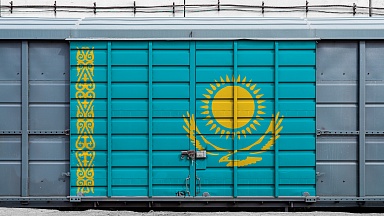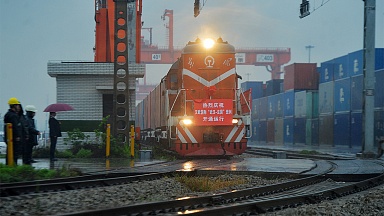China is the world’s largest shipper: the total exported cargo amounts to about 4.5 billion tonnes per year, of which 60 to 70 percent are shipped by sea. More than a third of global containers pass through China at some point.
The United States and the EU are seeking to limit Chinese technologies in logistics and shipbuilding. Routes from China to Europe and the United States pass through a number of strategically important ports, many of which have become the arena of geopolitical rivalry, especially amid the trade war between China and the United States. In response, China is forming an alternative logistical architecture, of which the Belt and Road overland route is a key element. Most of its length traverses Kazakhstan, Russia and Belarus. Shipment speeds are much faster here than if goods were to be shipped by sea. The shipping time amounts to 10−12 days compared to 30 days, respectively. Other routes through Kazakhstan, Iran and Türkiye that do not involve the Russian Federation are available as well.
Kazakhstan’s transit potential is a major resource that opens up new opportunities for economic growth. The country’s geographical location makes it a key participant in international transport and trade flows, especially as part of the New Silk Road, which underpins economic ties between China and Europe.
As transit volumes increase, new jobs are created and infrastructure is expanded in Kazakhstan, especially in the regions that are home to key transport routes. Expanded transit corridors improve the socioeconomic situation in the border and less developed regions by improving infrastructure, raising local standards of living and facilitating investment attraction. In recent years, Kazakhstan has seen major improvements in transit infrastructure, with about 600,000 new jobs created, and competitive low-cost corridors with high speeds of cargo delivery now in place. In general, over the past 15 years, more than 10 trillion tenge has been invested in expanding transit potential.
Amid the heightened risks facing maritime cargo transport, Kazakhstan needs to focus on expanding its transit potential. Notably, current figures reflecting volumes of transit cargo crossing the country exceed the benchmarks outlined in the Republic of Kazakhstan’s Transport and Logistical Capacity Development Concept to 2030. The actual volume amounted to 30 million tonnes in 2023, while the target volume stands at 27.7 million tonnes. According to the concept, by 2030 transit must reach 35 million tonnes, including 2 million TEU in container transport.
With world markets in turmoil, and Kazakhstan heavily reliant on oil exports, the country needs to continue vigorously diversifying its economy. Expanding transit transport, which is a stable and sought-after source of revenue that, unlike commodity markets, is immune to sharp price fluctuations, should be a priority for Kazakhstan to effectively address this issue.
Expanding transit potential is directly linked to creating a smart economy based on the integration of high-tech and innovative solutions in logistics. Process automation and digitalisation make it possible to not only increase transport volumes, but also improve their efficiency and reduce business costs. In the long term, this will provide Kazakhstan with sustainable sources of revenue that are less dependent on world prices for oil and other commodities.



